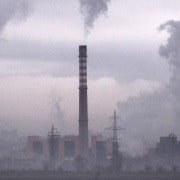The real 'cost' of making an effort
After working on climate change for more than 20 years you would think I would have developed fairly tough skin. Over these years I have seen politicians of all political persuasions peddle spin, halt truths and downright lies to defend the indefeasible.
But I have to admit that some comments from the government on the economic impact increasing Australia’s emission reductions ambitions are really starting to get under my skin. (The ALP is also not clean either, but I’ll get to later.)
Over the last few days, the government has suggested that if the ALP accepted the independent advice of some of our leading policy thinkers, Australia’s chief scientist and a former Reserve Bank chairman, and moved to a more credible emission target of 19 per cent that it would cost $3.2 billion dollars.
Really? That sounds like a big number and I bet they are hoping no one looks at its source.
But I did. It is from the report of the Climate Change Authority which actually recommends increasing Australia’s target. The full section of the CCA’s report states (p.133):
The economic impact [of moving to the stronger target] can be described using different metrics:
Growth in GNI (gross national income) per person
With a 5 per cent target, GNI per person is projected to grow by an average of 0.80 per cent annually over the period to 2020. Moving to a 19 per cent target slows GNI per person growth to an average of 0.78 per cent.
Level of GNI per person
In dollar terms, GNI per person is projected to grow from about $62,350 in 2012 to about $66,450 in 2020 with a 5 per cent target, and $66,350 in 2020 with a 19 per cent target.
Time to attain the same level of GNI per person
Average Australian income continues to rise, but at a slightly slower rate. The level of GNI per person in 2020 with a 5 per cent target ($66,450) would be attained less than three months later with a 19 per cent target.
Reduction in GNI level (economy-wide)
GNI is projected to continue to grow with a 19 per cent target, but at a slightly slower rate. With slower growth, GNI in 2020 would be $3.2 billion (0.18 per cent) lower with a 19 per cent target than it would have been with a 5 per cent target.
So, yes the government is correct on the number but completely fails to mention that the economy would in fact be $290 billion bigger in 2020 than today and our incomes would be on average $4000 higher.
The other thing that this modelling does not include is the benefits of actually reducing emissions. Based on very conservative US Government estimates of the dollar value of reducing a tonne of emissions, moving to the stronger target the CCA recommended would deliver around $20 billion in benefits in avoided climate damage. If someone said to invest $1 to give my kids at least $4, I certainly would.
The government’s suggestion that Australia implementing more credible pollution limits will also increase our price on carbon is uninformed at best and deliberating misleading at worst.
All independent advice from groups such as the CCA, the Treasury and even from business such as the Australian Industry Group say that under an internationally-linked carbon market, more credible emission targets don't impact on carbon prices in Australia.
The CCA’s headline on page 138 of its report could not be clearer, 'Moving to a stronger target does not change the carbon price'.
A higher carbon price would only be true under a policy of carbon isolationism that quarantines Australia from existing and emerging international carbon markets. This is not a position supported by business and is only supported by the government on its minimum 2020 carbon pollution reduction commitment of 5 per cent reduction off 2000 levels.
The global carbon market involves billions of tonnes of emission reductions and a few extra million tonnes of demand from Australia will have next to zero impact on global carbon prices. It is these that determine Australian carbon prices – not our emission reduction ambitions.
The next line of attack from the government suggests our minimum 5 per cent target, on 2005 levels, is in line with that of other economies. This might be true if you ignore the US, the policies of the EU, the UK, Germany, Norway, Indonesia and New Zealand in absolute terms, and South Africa in terms of below business and usual reductions.
This also ignores that in terms of per capita emission reductions, our 5 per cent target is the most pitiful across all economies assessed by the CCA.
The ALP does not get off scott-free here either. It can also duck and weave as much as it likes and try to ignore questions of its climate change ambitions, but the independent institutions it established have all recommended moving to higher targets. This is not just the CCA but also Professor Ross Garnaut, who was a key adviser to the previous government.
Its excuse before the 2007 election was 'we will wait for the Garnaut Review before setting targets', then it was the citizens assembly in 2010, then the excuse for not setting the target while in government was to wait for the Climate Change Authority. Now Labor expects the community to wait for another internal review. Seriously?
The world's top scientists have just outlined the real and significant threats to Australians and our economy from more extreme heatwaves, floods, droughts and bushfires. Australians need evidence-based leadership from all sides of politics to address this fundamental challenge to our country.
Slogans, hand wringing and scaremongering will not help make climate change stop. Only real and credible carbon pollution limits with credible policies to back them up will.
Erwin Jackson is deputy chief executive of The Climate Institute.
















